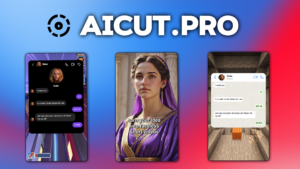Content Calendar Guide for Social Media Success
A well-structured content calendar is essential for maintaining consistency, staying organized, and driving social media success. This guide will help you create and manage a content calendar that aligns with your goals and ensures your social media efforts are strategic and effective.
1. Understand the Purpose of a Content Calendar
A content calendar is more than a scheduling tool—it’s a strategic roadmap. It helps you:
- Plan content in advance to maintain consistency.
- Align posts with business goals, campaigns, or seasonal events.
- Streamline collaboration with teams and stakeholders.
- Track content performance for optimization.
2. Define Your Social Media Goals
Clarify what you want to achieve through your content:
- Brand Awareness: Create content that expands your audience.
- Engagement: Focus on posts that encourage likes, shares, and comments.
- Traffic and Conversions: Share content with strong CTAs that drive clicks and sales.
- Community Building: Foster connections with relatable, authentic posts.
3. Choose the Right Tools
Select a tool that meets your needs, whether you’re a solo creator or part of a larger team.
Popular Tools:
- Google Sheets/Excel: Simple and customizable for basic needs.
- Trello or Asana: Visual task boards for team collaboration.
- Hootsuite or Buffer: Social media management with built-in scheduling.
- Notion: Flexible tool for advanced customization and team workflows.
4. Identify Your Platforms
Focus on platforms that resonate most with your target audience:
- Instagram: Visual content like images, Reels, and Stories.
- Facebook: Versatile content including posts, videos, and events.
- Twitter: Real-time updates, trends, and quick interactions.
- LinkedIn: Professional content such as articles, thought leadership, and job postings.
- TikTok: Short, engaging, and trend-driven videos.
5. Plan Your Content Types
Diversify your content to keep your audience engaged while meeting your goals.
Types of Content:
- Educational: Tutorials, how-tos, tips, and industry insights.
- Entertaining: Memes, challenges, or viral trends.
- Promotional: Product launches, sales, or lead magnets.
- Inspirational: Quotes, success stories, or motivational posts.
- User-Generated Content (UGC): Customer reviews, photos, or testimonials.
- Behind-the-Scenes: A glimpse into your team, processes, or daily operations.
6. Organize Your Calendar
Structure your calendar to maximize clarity and functionality.
Key Elements:
- Date: Schedule the exact day and time for each post.
- Platform: Indicate where the content will be posted.
- Content Type: Specify the type (e.g., video, image, poll).
- Topic/Theme: Identify the focus of the content.
- CTA (Call-to-Action): Define the desired action (e.g., “Sign up,” “Comment below”).
- Status: Track the content’s progress (e.g., Drafted, Scheduled, Published).
7. Align Content with Events and Campaigns
Incorporate key dates to create timely and relevant posts:
- Seasonal Events: Holidays, seasons, or cultural observances.
- Business Milestones: Anniversaries, product launches, or special promotions.
- Industry Trends: National awareness days or trending hashtags.
8. Create a Posting Schedule
Consistency is key, but it varies depending on the platform and audience expectations.
Recommended Posting Frequencies:
- Instagram: 3–5 times per week, with daily Stories.
- Facebook: 3–5 times per week.
- Twitter: 1–5 times daily.
- LinkedIn: 1–3 times per week.
- TikTok: 3–7 times per week.
Adjust based on your analytics and audience engagement.
9. Use Content Themes for Structure
Assign themes to each day to simplify planning and add variety.
Example Themes:
- Motivation Monday: Inspirational quotes or success stories.
- Tutorial Tuesday: How-to guides or tips.
- Throwback Thursday: Historical milestones or nostalgic posts.
- Fun Friday: Memes, humor, or behind-the-scenes.
10. Automate Your Scheduling
Save time by scheduling posts in advance using social media management tools:
- Hootsuite, Buffer, or Later: Schedule posts for multiple platforms in one place.
- Facebook Creator Studio: Free scheduling for Facebook and Instagram.
- Canva: Design and schedule posts directly.
11. Monitor and Analyze Performance
A content calendar is a dynamic tool. Regularly assess its effectiveness and make adjustments.
Metrics to Track:
- Engagement: Likes, shares, comments, and retweets.
- Reach: How many people saw your content?
- Clicks: The number of link clicks to your website or landing pages.
- Conversions: Sales, sign-ups, or other completed CTAs.
Use analytics tools built into platforms or third-party options like Google Analytics or Sprout Social.
12. Refine and Improve
Learn from what works and adapt your strategy:
- Identify top-performing content and replicate its elements.
- Experiment with new formats or themes.
- Continuously update your calendar to reflect changing trends and goals.
Sample Weekly Content Calendar Layout
| Date | Platform | Content-Type | Topic/Theme | CTA | Status |
|---|---|---|---|---|---|
| Monday | Motivational Quote | Motivation Monday | “Save for later!” | Scheduled | |
| Tuesday | Tutorial Video | How to Use Product X | “Watch now!” | Published | |
| Wednesday | Blog Post Link | Industry Insights | “Read more!” | Drafted | |
| Thursday | TikTok | Behind-the-Scenes Video | Office Fun | “Comment below!” | Scheduled |
| Friday | Meme | Fun Friday | “Retweet if you agree!” | Posted |
By implementing this content calendar guide, you’ll streamline your social media efforts, maintain consistency, and achieve greater success in connecting with your audience. Start planning today for a more organized and impactful social media presence!
Bonus Tip
If you want to automate your channels with top-quality faceless videos then check AICUT.PRO

Aicut.pro is an AI-driven platform designed to streamline the creation of short, faceless videos for social media channels like YouTube, TikTok, and Instagram. It enables users to transform text into engaging video content, reducing the time and effort typically associated with video production.



